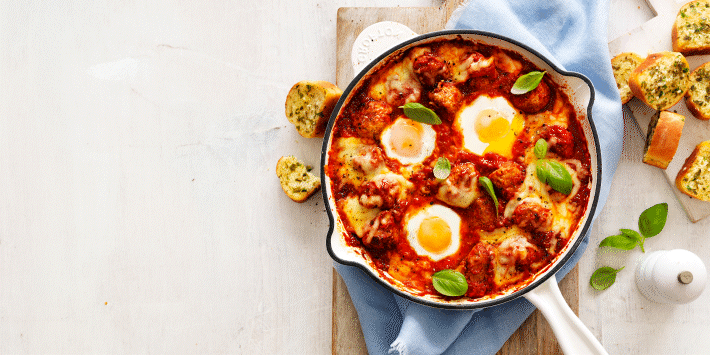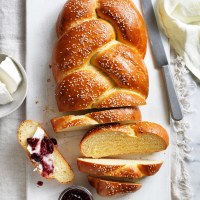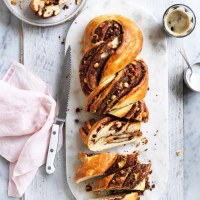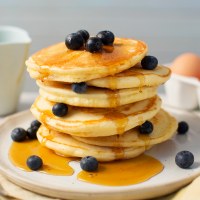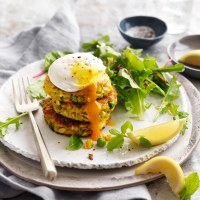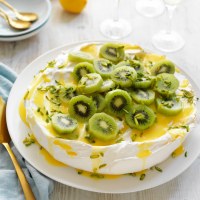One egg bread dough - three ways!
With this easy dough recipe, you can enjoy rich, tender egg bread in three different ways. What is egg bread? It's a yeasted bread dough that has been enriched with eggs and butter. It produces a dough similar to a brioche or challah bread. The addition of eggs to the dough creates a deep yellow/gold-coloured bread with a thin crust. The texture is delicate, with a tender crumb, and the flavour is rich and buttery.
Egg bread pairs well with sweet and savoury dishes because there is no additional sugar or salt in the dough. It is also the perfect base dough. Add nuts and chocolate for a sweet bread. Knead in chives and garlic for a savoury loaf to go with soups and stews. Here's how to make it, plus the answers to some frequently asked questions so you'll be an egg bread eggspert in no time.
INGREDIENTS
- 4 cups (600g) bread flour
- 2 tsp (7g) active dry yeast
- 2 tbsp caster sugar
- 1 tsp salt
- 60g cold butter, finely diced
- ½ cup (125ml) cold milk
- ½ cup (125ml) cold water
- 2 eggs, lightly beaten, 1 egg for glazing
- 3 tsp sesame seeds
METHOD
- Place 2 cups of the flour, yeast, sugar and salt into the bowl of a stand mixer fitted with the paddle attachment. Mix at low speed for 30 seconds or until well combined
- Add butter, milk and water. Beat at low speed for 1-2 minutes or until butter has been completely incorporated. Remaining at low speed, gradually add beaten eggs a little at a time, mixing well between each addition. Increase speed to medium and beat for 2 minutes. Mixture should now be glossy and sticky
- Remove paddle attachment and insert dough hook. Beat on low speed and slowly add remaining flour, ½ cup at a time, until it forms a firm dough
- Increase speed and knead for 5 minutes or until it forms a firm, smooth and elastic dough. Test using the windowpane method (see tips)
- Tip dough onto a lightly floured work surface and form into a ball. Place in an oiled bowl. Cover and allow to rise for 1 hour or until doubled in size.
- Punch down dough. From here, choose which type of bread you would like to make. For the plain loaf, divide the dough into three equal portions. Roll each portion into approx. 35cm ropes. Place onto a greased and lined baking tray. Pinch top of dough strands together and tuck under to seal. Braid the 3 strands, then pinch and tuck end under. Cover with cling film and allow to rise in warm place for 30 minutes
- Preheat oven to 200°C/180°C (fan-forced)
- Brush risen egg bread with remaining beaten egg. Sprinkle with sesame seeds and bake 25-30 minutes until golden brown. Cool on wire rack and serve warm or room temperature
Get the recipe to save to your myfoodbook cookbooks: Egg bread recipe.
Get the steps for the Choc-Hazelnut Egg Bread Braid.
Get the steps for the Garlic, Herb and Cheese Pull-apart.
Is egg bread the same as brioche?
It’s very similar, but it doesn’t contain as much butter as brioche. Brioche usually has a ratio of 50% butter to flour.
What does egg bread taste like?
Egg bread is richer and more buttery than normal white bread, similar to brioche. It has a softer texture, smaller crumb and a thin crust.
What happens when you add egg to bread?
Eggs add moisture, fat and protein to a yeast dough. Fat will inhibit the formation of gluten, which is formed when we knead dough, which means egg bread will take longer to knead than your traditional yeast dough. Gluten is what makes bread rise and gives you that soft, fluffy crumb. It’s why gluten-free breads tend to be thick and dense.
What is the windowpane test?
It’s a method of checking the dough’s elasticity and gauging the gluten development. To test your dough, cut off a small ball of dough and flatten it between both your thumb and first two fingers. Gently spread the dough apart. If it’s ready, the dough will easily stretch until it’s a thin membrane that you can see through, without tearing or breaking. If not, you have to knead it more.
Can you make egg bread with plain flour?
Yes, but be aware that it contains less protein (gluten) than bread flour, potentially reducing the dough’s rising capacity.
What makes bread soft and tender?
Eggs can help, they enrich the dough with protein that supplements gluten so that it rises well and you have a soft and fluffy loaf.
What do I do if my dough is too soft?
Add a tablespoon of flour at a time and knead until the dough firms up. If the dough is too warm and difficult to handle, refrigerate for 30mins to firm up.
What do I do if my dough is too dry?
Add a tablespoon at a time of water or milk, kneading between additions until it reaches the correct consistency.
Why didn’t my bread rise?
It could be because your yeast is too old. Check the use by date. You may have also overproved your dough, it should spring back when you touch it after the second proofing. If it doesn’t spring back, your dough may be over-proved. You can punch it down once more and let it reproof, but you won’t have the same results.
How to store egg bread to keep it soft and fluffy?
Place it into an airtight container and store in a cool dark cupboard for 2-3 days. Alternatively, wrap in cling film and refrigerate. Serve warm or toasted.
Can you freeze egg bread?
Yes. Slice it thickly, wrap it well, label and freeze for up to three months. Defrost in the refrigerator then warm it in a low oven or toast in a toaster.
Now you know how to enjoy deliciously rich and tender egg bread at any occasion, and you have all the tips and tricks to ensure your success. Watch the other recipe videos below, collect the recipes and let your inner baker shine!





